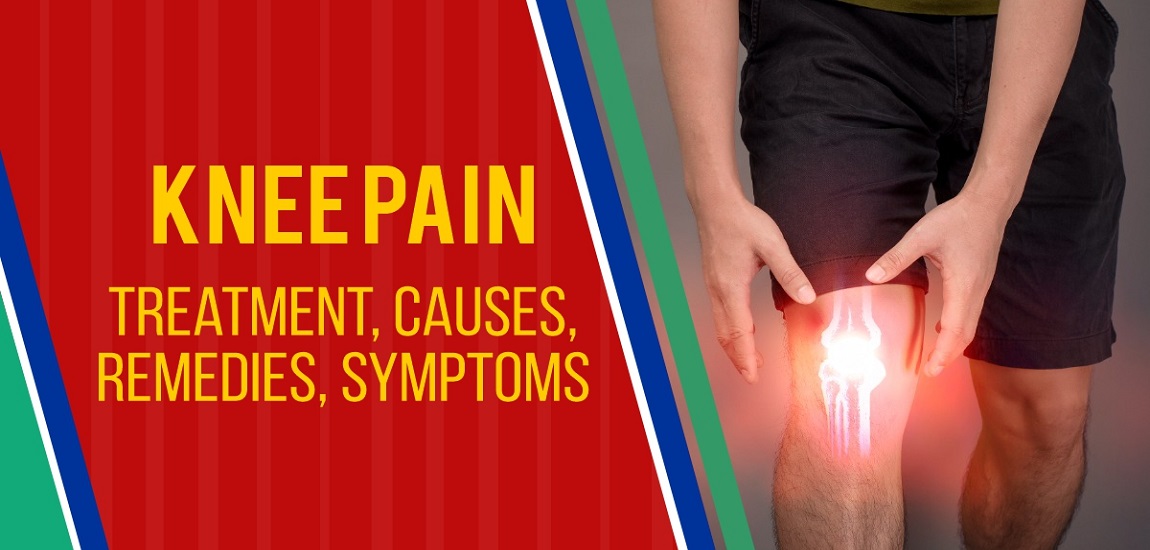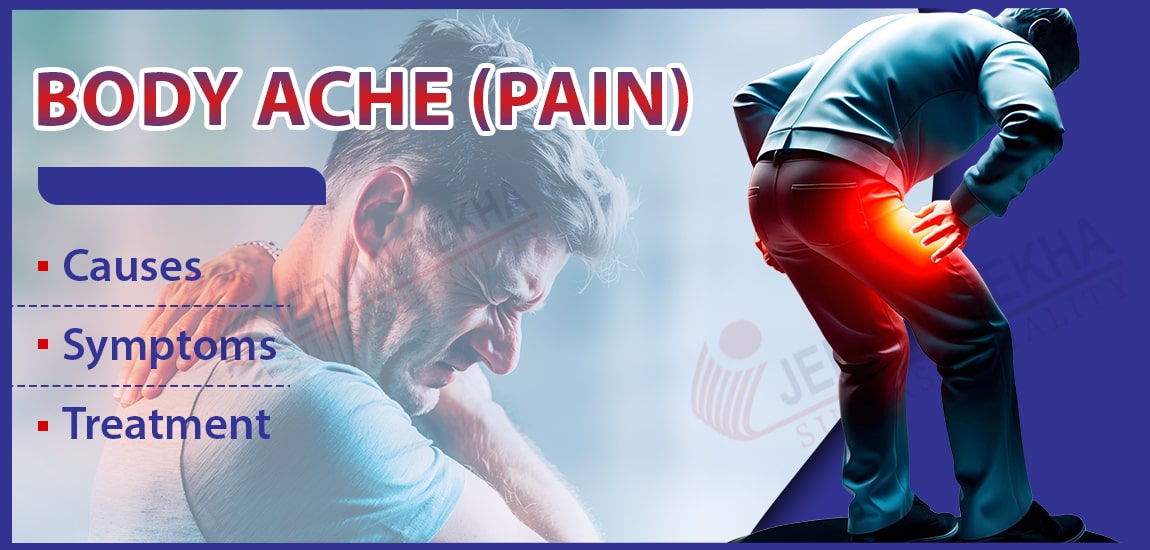
- By JRSH Admin
- In Health and Tips,
- Posted February 25, 2022
Knee Pain: Treatment, Causes, Remedies, Symptoms
What Is Knee Pain?
The most common causes of knee pain are overuse, injuries, and arthritis. Knee pain can occur at any age. However, older people are more likely to develop it in the later years due to joint degeneration, which is also known as osteoarthritis.
Rest, anti-inflammatory medication, and ice may help you feel better depending on what caused your pain. You may need surgery or a procedure to treat a more severe injury.
Even though knee arthritis cannot be cured, there are steps you can take to ease your symptoms and potentially slow the progression of the disease.
A surgeon often performs arthroscopic surgery (minimally invasive surgery) to repair knee injuries, such as tendons or ligaments. Knee instability and pain are common with these types of injuries. A knee replacement may be recommended if there is severe damage to the joint.
What are knee pain symptoms and signs?
A knee injury can present itself in a variety of locations and degrees of severity, depending on the underlying cause. The following sign and symptoms may manifest with knee pain:
- Swelling and stiffness
- Redness and warmth to the touch
- Weakness or instability
- Popping or crunching noises
- Inability to fully straighten the knee
What causes knee pain?
Below are some common causes of knee pain:
MEDICAL CONDITIONS:
- Arthritis: A person who has arthritis can have pain in many different joints within their body. Swelling of the joint occurs when you have arthritis in your knee. The condition is painful. Age increases your risk of developing knee arthritis over time. Arthritis can affect the knees in some different ways, such as:
- Rheumatoid arthritis: There are two types of arthritis, which are autoimmune diseases that attack the joints of the body causing inflammation (swelling) and causing the joints to deteriorate.
- Osteoarthritis: Degenerative arthritis occurs over time when cartilage breaks down in your joints. Joint health is affected by your weight. Obesity can put extra strain on the knee. This can cause pain. Exercise regularly and eat a healthy diet to stay in shape.
- Baker cyst: An abnormal swelling behind the knee caused by swelling (inflammation) from another source, such as arthritis.
- The spread of cancer to your bones or the beginning of bone cancer
- Osgood-Schlatter disease
- An infection in the knee bones
- Infection in the knee joint
INJURIES AND OVERUSE:
- Bursitis: Inflammation of the knee caused by repeated pressure, such as kneeling for a long time, overuse, or injury
- Dislocation of the kneecap
- Fracture of the kneecap or other bones
- Iliotibial band syndrome: Damage to the thick band running from your hip to the outside of your knee
- Patellofemoral syndrome: Pain around your kneecap in the front of your leg
- Torn ligament: An anterior cruciate ligament injury (ACL) or a medial collateral ligament injury (MCL) can cause swelling and instability in your knee.
- Strain or sprain: An injury resulting from unnatural or sudden twisting of the body
What are the types of knee pain?
There are around 100 kinds of arthritis. You might experience knee problems from the following types of arthritis:
- The most common form of arthritis described here is osteoarthritis. A knee joint's cartilage, which cushions your three bones, can wear away due to osteoarthritis. When your bones do not have this protection, they rub against each other. A stiff neck, aching joints, and difficulty moving can result. Osteoarthritis can also result in bone spurs. It gets worse as time passes.
- Post-traumatic arthritis is a form of osteoarthritis. After you suffer an injury to your knee (such as one sustained in a car crash) the cartilage starts to thin. Osteoarthritis symptoms are pain, stiffness, and limited movement caused by rubbing your bones together. These symptoms may not appear immediately after an injury it may take years.
- Autoimmune diseases are the cause of rheumatoid arthritis. When defending you against a foreign invader, infection, injury, toxins, etc., your immune system creates inflammation (internal or external). You can protect yourself with an inflammatory response. When you have rheumatoid arthritis, your immune system malfunctions, triggering unnecessary inflammation in your joints regardless of the absence of foreign invaders. Besides causing pain, stiffness, and swelling, inflammation also wears away cartilage.
What are the stages of arthritis of the knee?
Osteoarthritis is the most common form of arthritis that affects your knees. It is divided into five stages:
- Stage 0 (Normal). You are healthy if your knees are at stage 0. Your knees do not have arthritis.
- Stage 1 (Minor). Stage 1 indicates that your knee joint has been worn down. You probably won’t have any pain.
- Stage 2 (Mild). During the mild stage, you may begin to feel pain and stiffness, but there is still enough cartilage between the bones to stop them from touching.
- Stage 3 (Moderate). At this stage, you will experience more pain, especially when walking, running, and kneeling. After sleeping for a while (like first thing in the morning), you're likely to notice it. Due to the narrowing of the cartilage and the presence of many bone spurs, you most likely are in great pain.
- Stage 4 (Severe). A severe case of osteoarthritis means that almost all cartilage has been destroyed. This may result in stiffness, pain, and immobility in the knee. Your doctor may recommend surgery.
What are risk factors for knee pain?
Risk factors for knee pain include:
- Family history. Having a parent or a sibling who has arthritis may make you more likely to develop it as well.
- Age. Several types of arthritis - such as osteoarthritis, rheumatoid arthritis, and gout - are more common as we grow old.
- Your sex. Rheumatoid arthritis affects more women than men, while gout, another form of arthritis, primarily affects men.
- Previous joint injury. The likelihood of developing arthritis in a joint that has been injured, perhaps while playing a sport, increases.
- Obesity. Having extra weight puts stress on the knees, hips, and spine. Overweight people are at an increased risk for arthritis.
When should you see a doctor for knee pain?
If you have severe knee pain after an accident or a fall, or if your knee is too painful or unstable to support your weight, see your doctor immediately.
Seeing your doctor is also a wise idea if your knee is swollen or you can't bend it fully. Consult your doctor if your pain persists for more than a few days.
What procedures and tests diagnose knee pain?
First, the health care professional will ask questions about the person's general health and then specifically about the knee pain (how long has it existed, how severe it is, is there anything that causes it to worsen, etc.).
After that, a knee examination will be conducted. As part of this procedure, we will bend the knee through its full range of motion, check the ligaments' stability, and evaluate any tenderness and swelling. Comparison of the results of the examinations of the painful knee and the other knee is often helpful. This is all that is usually needed to diagnose and begin treatment. Several studies have shown that experienced examiners are just as accurate as x-rays.
A doctor might want to perform additional tests like these at times.
Radiologic tests:
It is possible to establish fractures and degenerative changes of the knee with a plain X-ray.
A knee MRI is used to assess soft tissue injuries, such as ligament tears or cartilage damage.
Blood tests:
A health care professional might order blood tests if gout, arthritis, or other conditions are suspected.
Removal of joint fluid (arthrocentesis):
By removing a small amount of fluid from the knee joint, some conditions can be diagnosed more accurately. Arthrocentesis involves inserting a needle into a joint and withdrawing fluid. This procedure is sterile.
A sample is analyzed in the laboratory. The procedure can be of significant help in determining whether the knee joint is infected or whether it is gout or another form of arthritis. The removal of the fluid in the joint that has collected due to a traumatic injury can alleviate the pain.
What are the treatments for knee pain?
A doctor may suggest treatment if your knee pain does not resolve with rest and ice. A common cause of knee pain is weak hip muscles or foot problems, both of which can be treated.
According to the condition causing your pain, your doctor will suggest a treatment.
Painkillers:
A stronger painkiller, such as codeine, may be prescribed if your pain is severe. This drug has more side effects than standard painkillers, so your doctor may prescribe it for a short period before suggesting another treatment to address the causes of your pain.
This will include physiotherapy, talking therapies, pain management programs, surgery, and injections.
Physiotherapy:
A physiotherapist may be able to help you with knee pain depending on what caused it and what part of the knee hurts. Physiotherapists can provide customized advice based on your specific situation.
The following treatments may be recommended:
- If your knee pain stems from something else, then this program may need to last a while, depending on what is causing it
- An adhesive tape is applied over the kneecap so that it changes the way your kneecap sits or moves
- Several types of knee braces are available from sports shops, chemists, and online retailers, but not every knee problem can be treated by these. Consult your physician or physiotherapist before getting a brace.
Surgery or injections:
Injections or surgery are not recommended for most types of knee pain. Non-invasive treatments are usually just as effective, or even better than invasive ones.
It is unlikely that an injection will be sufficient to treat your condition on its own. Moreover, not all knee problems can be treated by injections, and the injections themselves can cause side effects.
Your doctor may refer you to a surgeon for knee replacement surgery if you have osteoarthritis of the knee and it is causing you a lot of pain and difficulty with everyday activities.
Tags
Blog Search
Latest Posts
-
Dark Circles Under The Eyes: Causes, Home Remedies and Treatments
December 21, 2025 -
बर्ड फ्लू के लक्षण, कारण, उपचार और बचाव के उपाय जानें
December 04, 2025 -
Best Diet Plan for Menopause Weight Management
November 25, 2025 -
Pulmonary Fibrosis Treatment: Understanding Lung Scarring and Breathing Problems
November 21, 2025 -
Arrhythmia: Types, Causes, Symptoms, and Treatment
November 07, 2025




